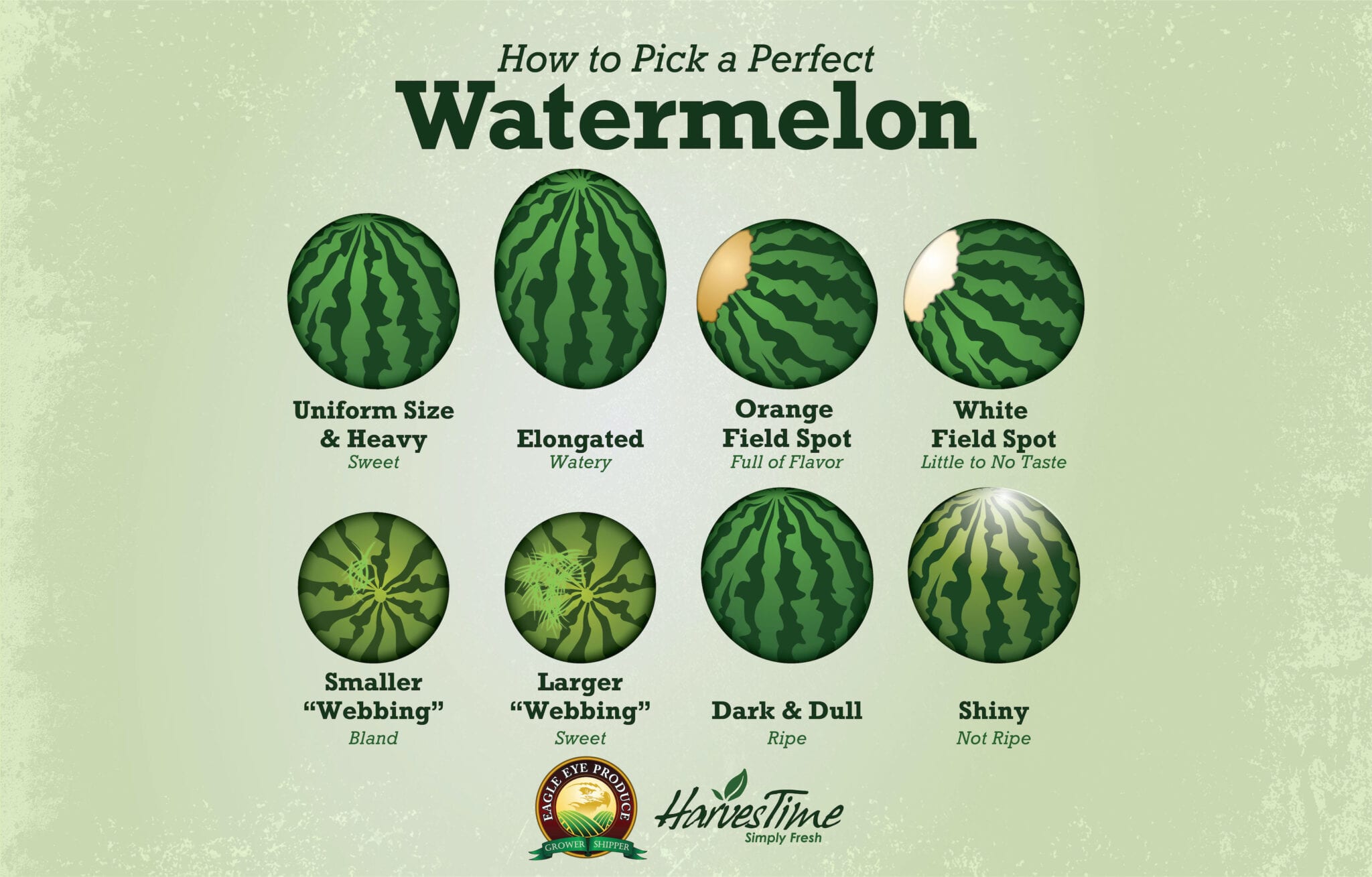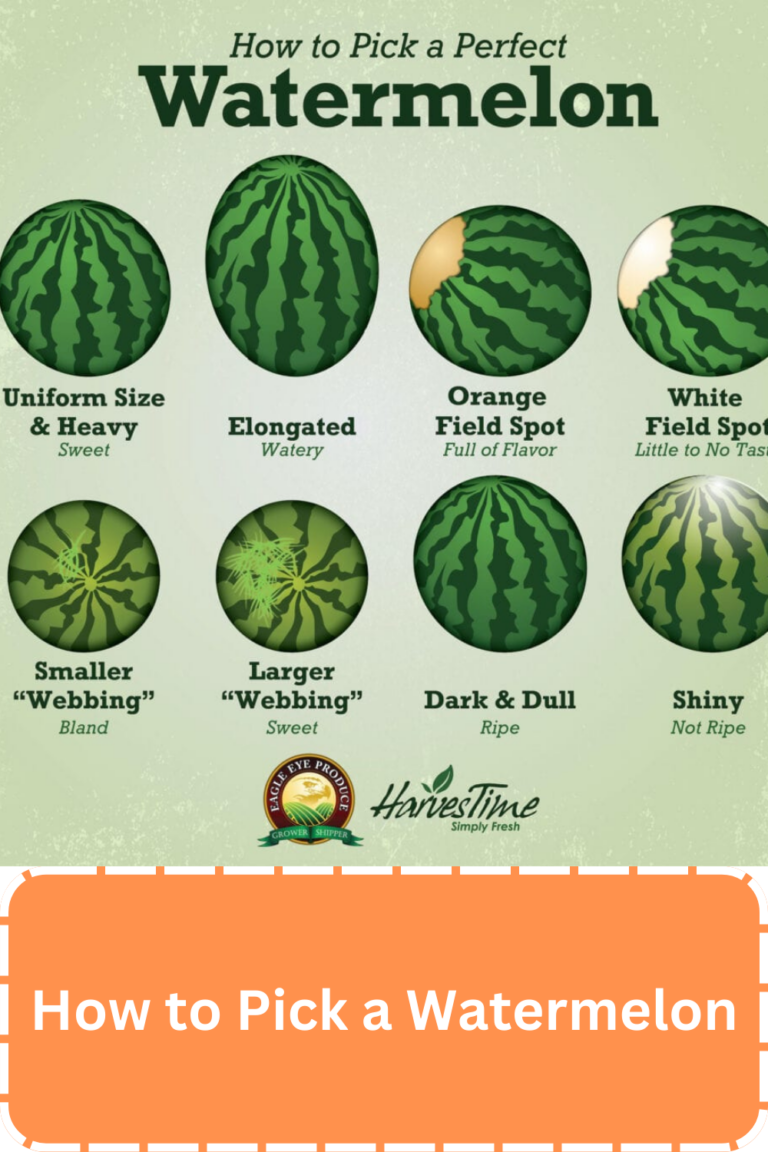How To Pick A Watermelon: Your Guide To Sweet Summer Slices
Do you get stressed every time you have to choose a watermelon from the bunch at your grocery store? It's a common feeling, really. You might stand there, looking at all the big, green fruits, wondering which one will actually be the sweet, juicy treat you are hoping for. It's almost like a little gamble each time you pick one up.
We get a lot of questions about how to pick a melon that is ripe and sweet, you know. Watermelon is a summer staple, after all. But, selecting a perfectly ripe one takes some skill, it really does. Many folks just grab the first melon they lay their hands on, which, in a way, is a bit of a risk.
Selecting a sweet and ripe watermelon can feel a bit like going on a blind date, actually. But it doesn’t have to be that way, you see. Here’s how to take the guesswork out of picking a perfectly ripe watermelon. These simple tips for how to pick a watermelon will help you pick a winner every time, too.
- Sophie Rain Spiderman Video
- How Do I Say Goodbye Lyrics
- In The Clurb We All Fam
- Is Clarke From Love Island Trans
- More Than A Married Couple
Table of Contents
- Understanding the Signs of a Ripe Watermelon
- The Four S's Method for Picking a Melon
- What to Avoid When Picking Your Watermelon
- After You Pick It: Cutting, Washing, and Storing
- Frequently Asked Questions
- Your Next Sweet Slice
Understanding the Signs of a Ripe Watermelon
Picking the perfect watermelon may be tricky, you know, but by looking at its features, you can really choose a winner. These are some of the first things to check when you're at the store, just like a grower might, actually.
The Field Spot: Its Belly Button
One of the best ways to tell if a watermelon is ripe is to check its field spot, you know. This is the spot where the watermelon rested on the ground while it was growing, basically. A ripe, flavorful watermelon will have a creamy yellow field spot, or what some call a "yellow belly." It's a very good sign.
If the spot is white or, say, has no spot at all, that melon probably got picked too early, it's true. A creamy yellow color means it spent a good amount of time soaking up the sun, which is pretty important for sweetness. So, just look for that yellow patch, it’s a key indicator, really.
- Shasha Prasad
- Timothee Chalamet Net Worth
- Boo Did I Scare You Im A Job Application
- Jamaican Restaurants Near Me
- King Edward Love Chair
Dry Webbing Spots: Sugar Trails
Here’s a pretty genius tip from The Kitchn, one I hadn't heard before, actually. Look for dry webbing spots on the watermelon’s skin. These are the rough, brown, web-like lines you might see, you know. These spots mean that bees touched the flower many times, which helps with pollination.
More pollination usually means a sweeter fruit, in a way. So, a ripe, flavorful watermelon will have strong stripe patterns and dry webbing spots, you see. Larger webbing, in fact, can often mean a sweeter melon. It's a really interesting thing to look for.
Feeling the Weight: Heavy for Its Size
This tip is a classic, and for a very good reason. A ripe, juicy watermelon should feel heavy for its size, almost surprisingly so. When you lift it, it should feel much heavier than it looks, you know. This heaviness means it's full of water, which is what makes a watermelon so refreshing and, well, juicy.
If a watermelon feels light for its size, it might be dry inside, or just not as ripe. So, pick up a few, compare them, and choose the one that feels the most substantial, basically. It's a simple test, but it works, honestly.
Shape Matters: Symmetrical Is Good
When you're looking at the overall shape, you want something that is pretty symmetrical. A good watermelon will have a uniform shape, whether it's round or oval, you know. Avoid melons that look lopsided or have strange bumps, you see. Those odd shapes can sometimes mean the melon didn't get enough water or sun in certain spots while it was growing.
A symmetrical shape often points to even growth and, in turn, a more evenly ripe and sweet fruit. So, just give it a quick visual check, you know, to make sure it looks balanced. It's a simple thing, but it helps.
The Four S's Method for Picking a Melon
When shopping, you can use what some call the "four S's" to pick a perfectly ripe watermelon. This method, taught by a grower, really helps take the guesswork out of things. It's a very practical approach, actually.
Sheen: Dull Is the Rule
You might think a shiny watermelon looks fresh, but it's actually the opposite when it comes to ripeness. For a sweet, ripe watermelon, you should look for dark and dull skin, you know. A shiny rind often means the melon is not quite ripe yet, basically.
A dull appearance suggests the watermelon has had enough time to mature on the vine. So, when you're looking at the bunch, tend to pick the ones that don't have that bright, glossy look. It's a bit counter-intuitive, but it's true, honestly.
Shading: Strong Stripes Are Best
Look at the stripe patterns on the watermelon, you see. A ripe, flavorful watermelon will have strong stripe patterns. The dark green stripes should be very dark, and the lighter green stripes should be noticeably lighter. This clear contrast in shading is a good sign.
If the stripes are faded or not very distinct, it might mean the melon isn't as ripe as it could be. So, just check for those bold, clear patterns, you know. It’s a visual cue that often points to a well-developed fruit.
Sound: The Knock Test
The "knock test" is a classic for a reason, it really is. Use the “knock test” to listen for a deep, hollow sound. Gently tap the watermelon with your knuckles, you know, like you're knocking on a door. A ripe watermelon will make a deep, hollow sound, almost like a drum.
If it sounds dull or thud-like, it might be overripe or underripe. A high-pitched sound could mean it's not ready yet. So, just give it a good knock, and listen carefully. It takes a little practice, but you'll get the hang of it, basically.
Size: Consider Its Overall Presence
While "heavy for its size" is key, the overall size does play a part, too. When you're looking at watermelons of similar size, the heavier one is usually the better choice, as we talked about. But generally, a good, ripe watermelon will be a decent size, not too small, not too big for its type, you know.
You want a melon that feels substantial, really. Don't just pick the first melon you lay your hands on; take a moment to compare a few. A grower explains the easiest way to pick the perfect watermelon often includes considering the size in relation to its weight, actually.
What to Avoid When Picking Your Watermelon
Just as important as knowing what to look for, is knowing what to steer clear of, you know. There are some clear signs that a watermelon might not be the best choice. Avoid melons that appear dull or have bruises, dents, or cracks in the rind, you see. These can be signs of damage or that the melon is starting to go bad.
Also, if a watermelon has soft spots, that's a pretty clear indicator it's past its prime. You want a firm, unblemished rind all around. So, just give it a good look over before you decide, basically. It's a simple check that saves you from disappointment.
After You Pick It: Cutting, Washing, and Storing
Once you've picked your perfect watermelon, there are a few things to keep in mind for enjoying it. Even though you'll be eating the inside, it's a good idea to wash the outside of the watermelon before cutting it, you know. This helps remove any dirt or bacteria that might be on the rind, which could transfer to the flesh when you slice it.
For cutting, a large, sharp knife works best. You can slice it in half, then into wedges, or even cut it into cubes for easy snacking. If you don't eat it all at once, store any cut watermelon in an airtight container in the refrigerator. This helps keep it fresh and juicy for longer. You can learn more about fruit preparation on our site, and find tips on storing all kinds of produce by visiting our storage guide.
Frequently Asked Questions
Here are some questions people often ask about picking a good watermelon, gathered from lots of conversations with produce people, farmers, and personal experience.
How do you tell if a watermelon is ripe by knocking on it?
You can tell if a watermelon is ripe by knocking on it if you hear a deep, hollow sound, you know. This sound suggests the melon is full of water and has reached its peak ripeness. A dull thud or a high-pitched sound, on the other hand, usually means it's not quite ready or maybe even past its best, actually.
What does a good watermelon look like?
A good watermelon will have dark and dull skin, strong stripe patterns, and a creamy yellow field spot where it rested on the ground, you see. It should also have dry webbing spots, which are those rough, brown lines. Plus, it should feel quite heavy for its size when you pick it up, honestly.
What is the yellow spot on a watermelon?
The yellow spot on a watermelon is called the field spot, you know. It's the part of the melon that sat on the ground while it was growing. A creamy yellow color for this spot is a very good sign of ripeness, meaning the watermelon had plenty of time to mature and get sweet in the sun, basically.
Your Next Sweet Slice
So, the next time you're at the store, you know, you'll have these six tips for how to pick a good watermelon that’s ripe and sweet. Picking the perfect watermelon may be tricky, but by looking at its shape, color, skin, spots, and feeling how heavy it is, you can choose a winner every time, it's true. These tips do work, honestly. Go ahead, pick a great one and enjoy that wonderful summer staple! You might even find a pretty genius tip from The Kitchn in there, too. For more fruit-picking wisdom, you could check out a reputable food website for general produce guides.
- Mid Taper Textured Fringe
- 4 Guard Buzz Cut
- Somber Smithing Stone 6
- Goob From Meet The Robinsons
- How Did Technoblade Die

How to Pick a Perfect Watermelon - Eagle Eye Produce

How to Pick a Watermelon - WEEKNIGHT RECIPES

How to pick the perfect watermelon – Artofit